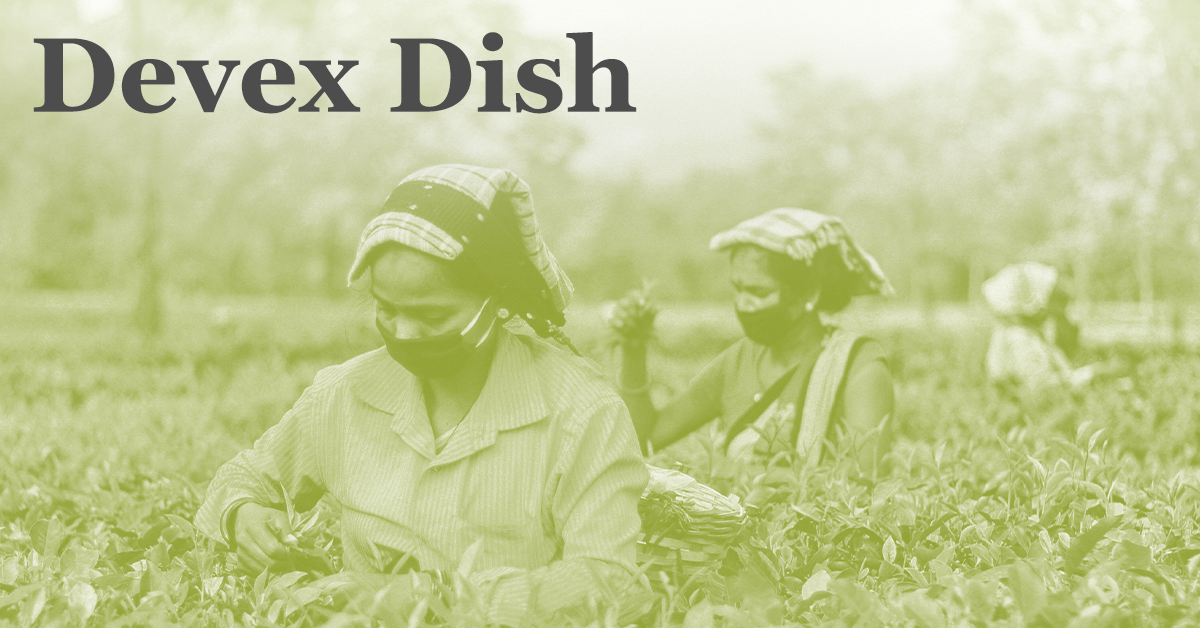Livestock dies in droves in Somalia — and without rains ‘humans are next’
Somalia is experiencing one of the worst droughts in the country’s recent history, threatening the lives of those dependent on livestock and agriculture.

PUNTLAND, Somalia — For Hawa Hassan, having livestock means having freedom and security. About a year ago, she had about 600 goats and sheep. Her family would roam around Somalia in search of pasture and water. When they needed cash, they would sell a few for about $60 each and use their livestock’s milk and meat to feed the family.
But beginning in late 2020, the rains failed. And with each subsequent rainy season, they failed again. Her family would release their goats to find food, but some wouldn’t return. The animals began to perish day by day in the unforgiving landscape of sand, stones, and dehydrated bushes. In the past three months alone, about 250 died. Now she only has 35.
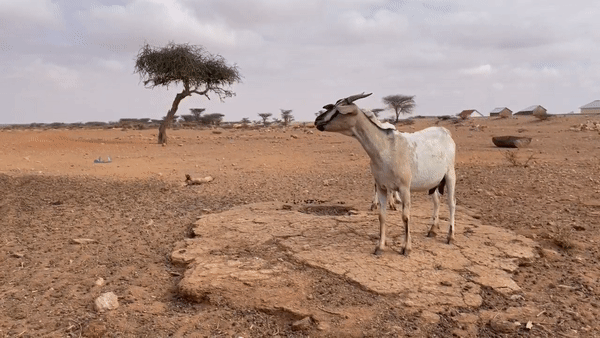
One of Hawa Hassan’s last remaining goats.
One of Hawa Hassan’s last remaining goats.
“This is our only source of income. If our animals die, we might be next. There is no way for us humans to stay alive without them,” she said.
In December, Hassan walked with her husband and their seven children for two days in search of a steady source of water to keep the last remnants of their flock alive. Their only camel died along the way.
"The severe drought worsens day by day. People are quite weak, and the livestock are dying. The humans are next if the rains don't come."
Eventually, they reached the village of Dhaxan, where they set up a tent, cobbled together with sticks and pieces of cloth and tarps.
Surrounding the village are a handful of cement dugouts used to catch rainfall called berkads, which look like empty swimming pools with wires and branches strewn across the top. Most of them have been dry for about two years. The community can’t depend on rainfall, so it instead relies on water trucks from the nearby city of Qardho.
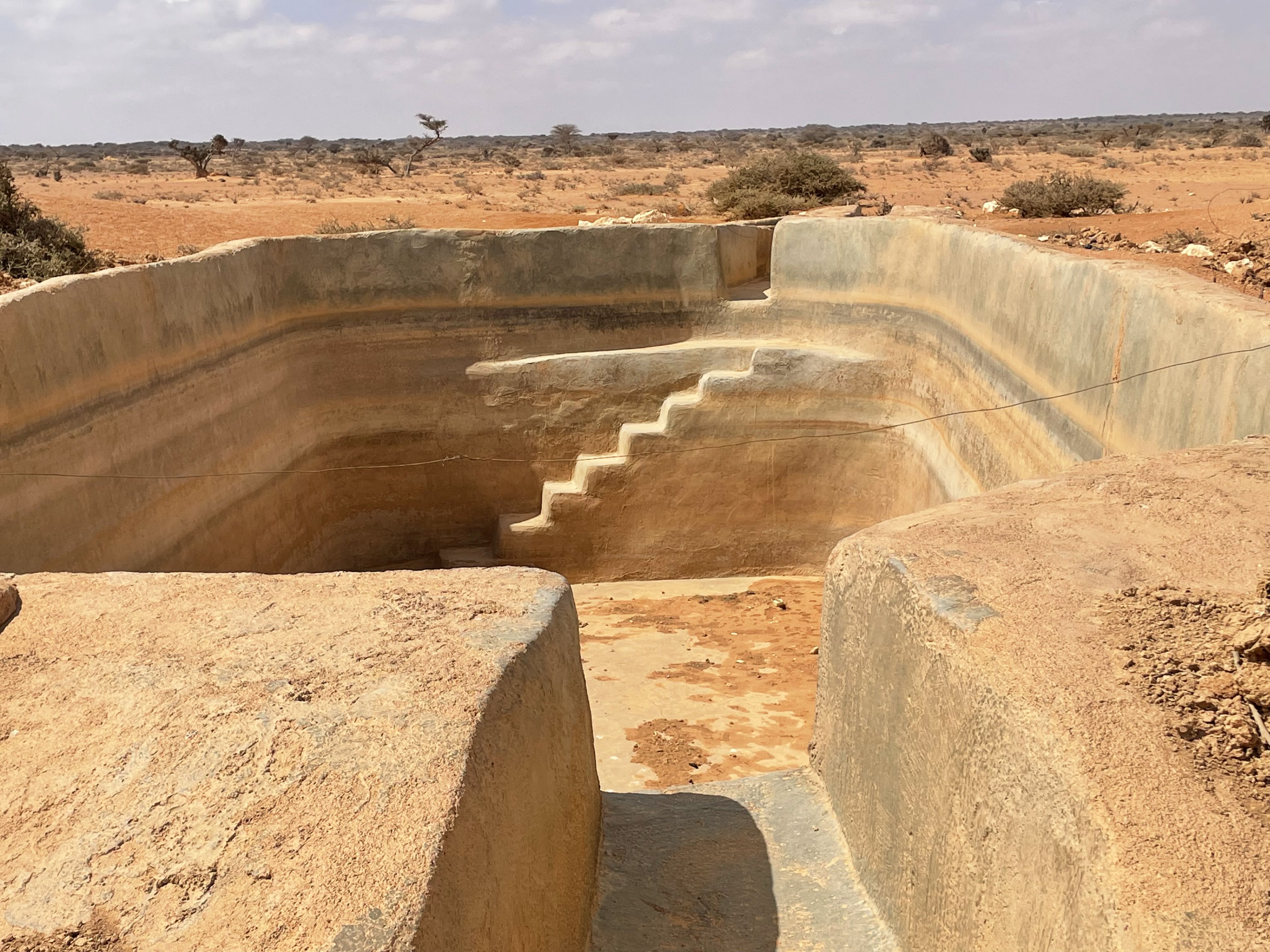
A water catchment area.
A water catchment area.
For Hassan, moving near a tarmac road on the water delivery route provides some level of security. But this also comes at the cost of a few dollars per water barrel, with prices spiking because of wide-scale need. They have depleted their savings and now depend on water provided by their neighbors.
Recently, three baby goats were born but their mother was not strong enough to feed them. Hassan leaned over and encouraged a newborn goat to suckle milk from the teat of another female goat, as the mother stood anxiously next to the newborn she was unable to feed. Hassan is worried her newborn goats won’t survive the coming weeks.
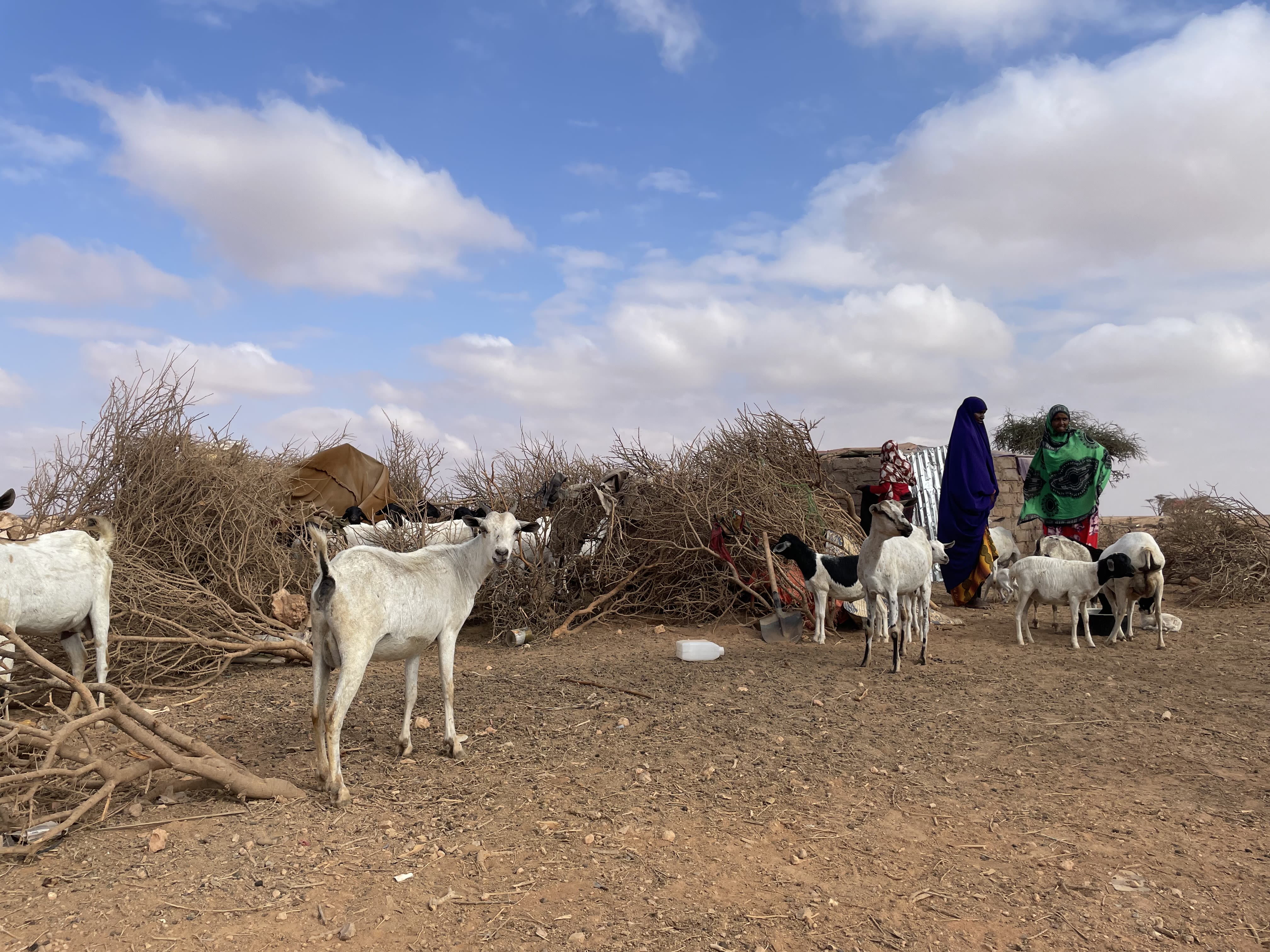

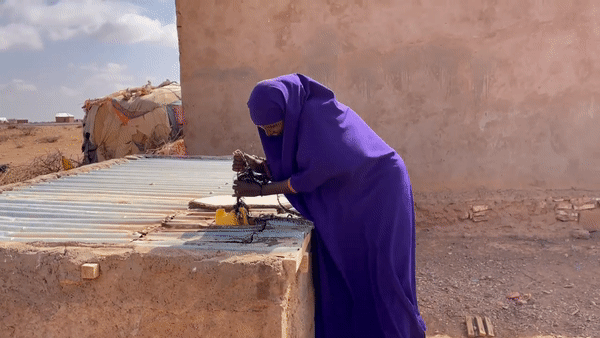
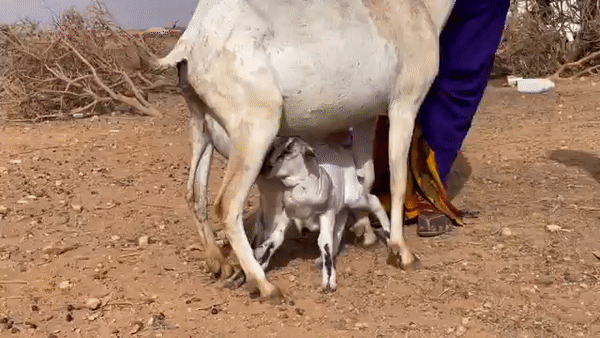

Hawa Hassan pulling up water that has been trucked in.
Hawa Hassan pulling up water that has been trucked in.

Newborn goats suckling milk from a goat that is not their mother.
Newborn goats suckling milk from a goat that is not their mother.
The Horn of Africa is suffering from one of its most severe droughts in recent history. The rains failed three seasons in a row, spiraling the majority of the country into severe drought, with some areas facing the worst conditions in 40 years. Internal displacement from the drought has more than doubled in recent months, now reaching nearly 700,000 people. That is projected to double yet again to 1.4 million people as the situation worsens.
By May, it's projected that about 30% of the country might not have enough to eat. At least 4.5 million people have already been affected by the prolonged drought. Across the Horn of Africa, 13 million people face severe hunger.
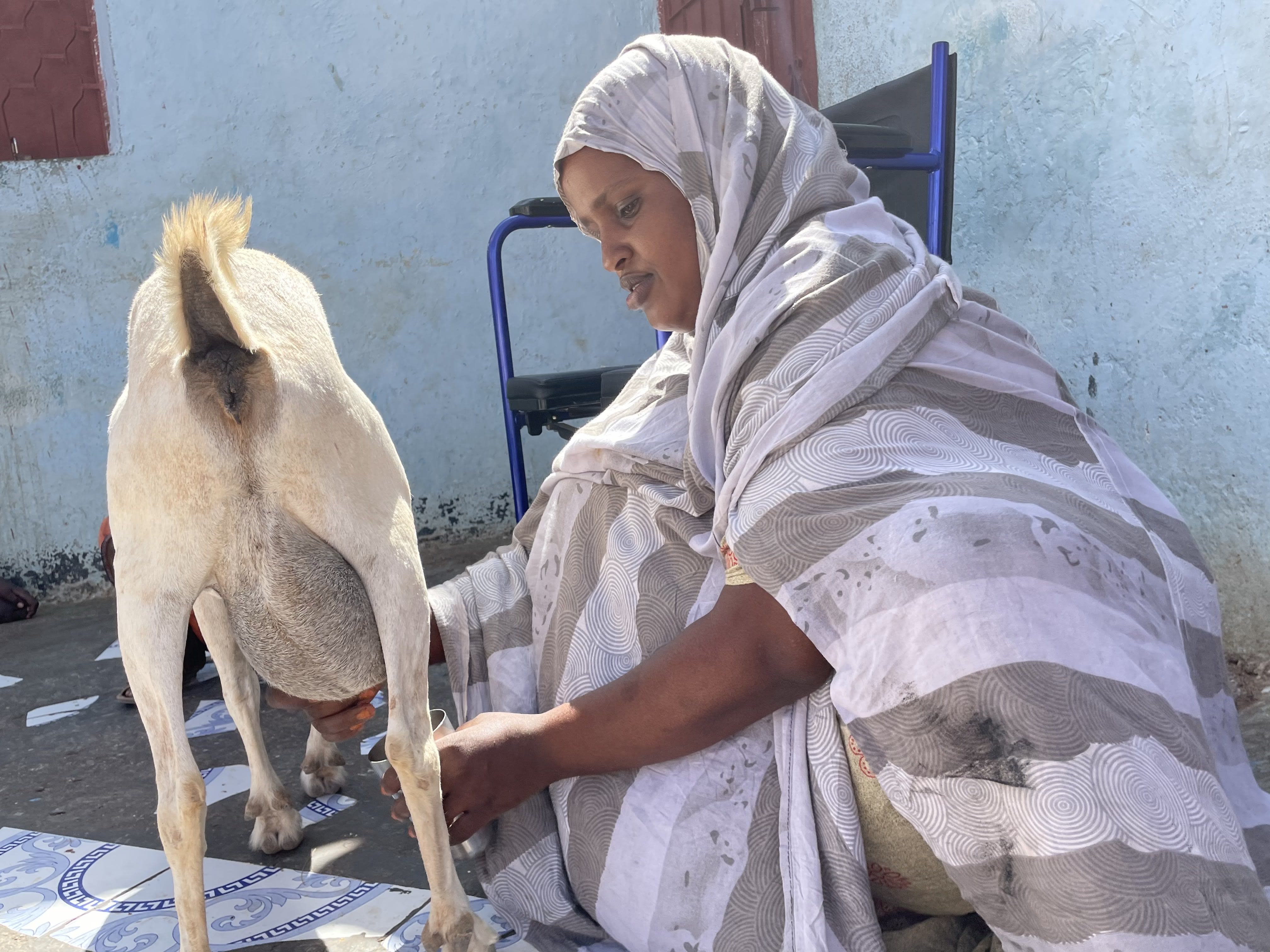
A resident of Qarxis village milking one of her last remaining goats.
A resident of Qarxis village milking one of her last remaining goats.
"The severe drought worsens day by day. People are quite weak, and the livestock are dying. The humans are next if the rains don't come," said Faduma Hassan Hussein, a midwife working at a health clinic in the town of Qarxis.
A lot is riding on the next rainy season, which is expected in April. Another failed rainy season would be disastrous. Even if sufficient rains do come, it could replenish water sources but won’t provide enough relief to the shriveled-up vegetation.
“The rainy season is expected in the first or second week of April, but given the situation, it seems like nobody can wait until then,” said Jama Hassan Abdille, director general of the Puntland’s Ministry of Labor, Youth and Sports. “March is a very hot time which will further devastate the situation.”

The last of Hawa Hassan's flock.
The last of Hawa Hassan's flock.
Without pasture, Hassan’s family feeds their goats rice to keep them alive. They aren't healthy enough to be sold, she said, and the family cannot drink the milk themselves. The family also lives on just rice. Hassan can’t remember the last time she ate meat or vegetables. A month ago, her 4-year-old daughter suffered from diarrhea and was hospitalized after drinking contaminated water.
They have relatives in Dhaxan, who have provided them with help. But everyone is stressed in that community — and Hassan knows this support has its limitations.
“This is our only source of income. If our animals die, we might be next. There is no way for us humans to stay alive without them.”
Previous droughts have also hit her family hard, killing large numbers of livestock, but then the rains came — bringing much-needed relief. With the consecutive failed rainy seasons, her family has no opportunity to recover their flocks.
“When I had 600 animals, I wasn’t worried about my life or the lives of my children,” she said. “But now, my stress is endless.”
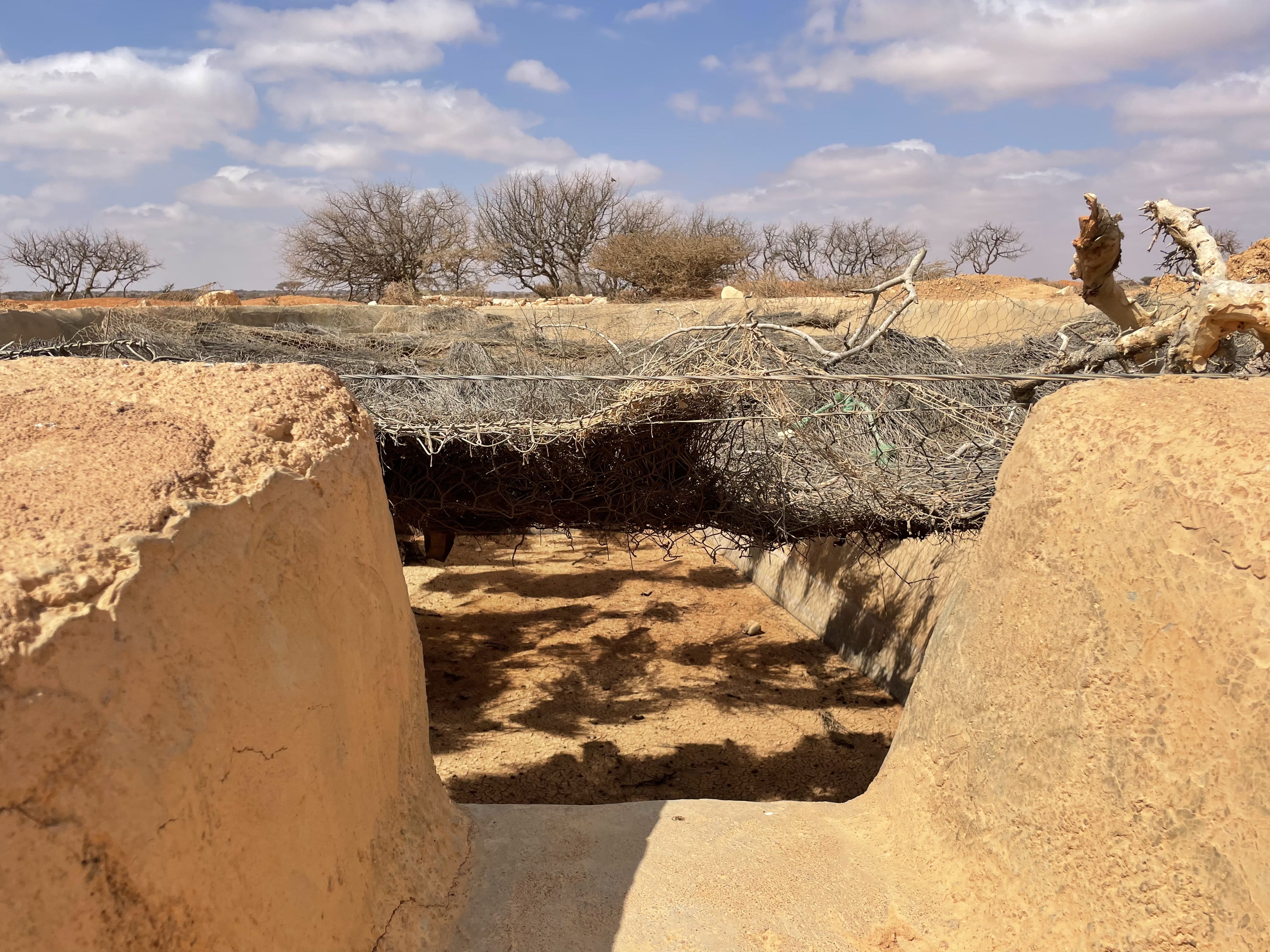

Malnutrition and outbreaks
In the dusty town of Qarxis, in Puntland, the residents feel the ripple effect of the livestock dying in droves. The pastoralists no longer come to town selling livestock and buying goods from people in the village.
Maryan Ali Awke used to have a small shop but had to close it in September because of the crumbling economy. “My main customers were pastoralists, and they don’t have the money to buy from me,” she said. Livestock contributes 40% to the Somali gross domestic product.

Midwife Faduma Hassan Hussein is worried about a rise in health outbreaks in the coming months.
Midwife Faduma Hassan Hussein is worried about a rise in health outbreaks in the coming months.
The price of goods, such as milk has spiked, according to residents, and vegetables are expensive and not widely available. Meat is scarce because many of the remaining animals are too weak to be sold. This impacts the nutrition of the community. Many families eat primarily plain rice and pasta each meal.
Ayan Hirse Elmi’s husband, who makes shoes, is out of work because of the economy. For the past two days, the family hasn’t eaten anything. The shops in the internal displacement camp where they live on the outskirts of Garowe, Puntland’s capital, stopped allowing them to purchase food on loan.
“We are expecting a high number of cases of malnutrition in the coming months,” said Filsan Mohammud, a nurse at a maternal health center in Yake village. She said they also expect to see an increase in diarrhea, which makes it more difficult for children to absorb nutrients. Last year, there were two outbreaks of watery diarrhea in the area because of contaminated water. With limited access to water, hygiene and sanitation drops on the list of priorities.
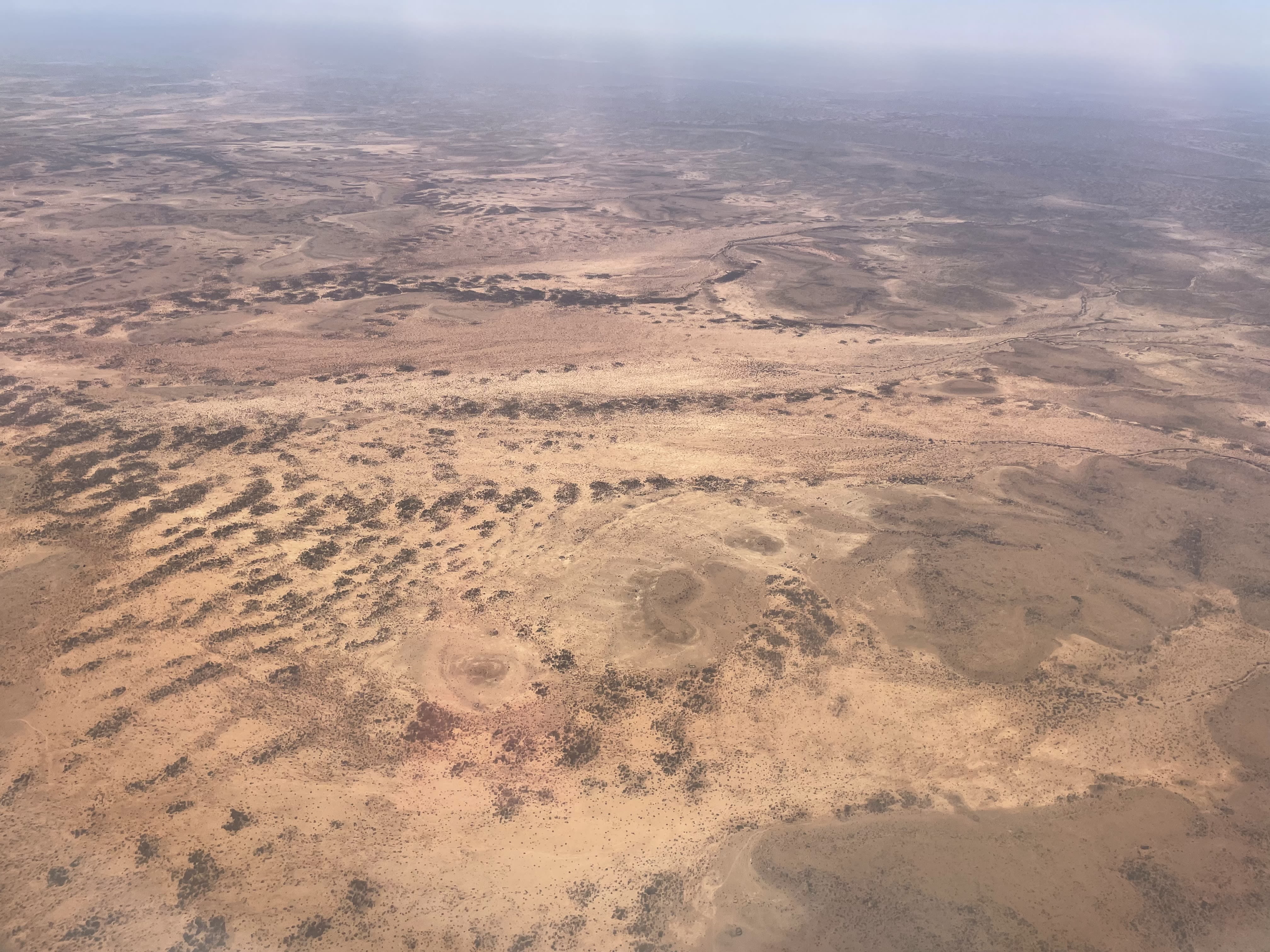

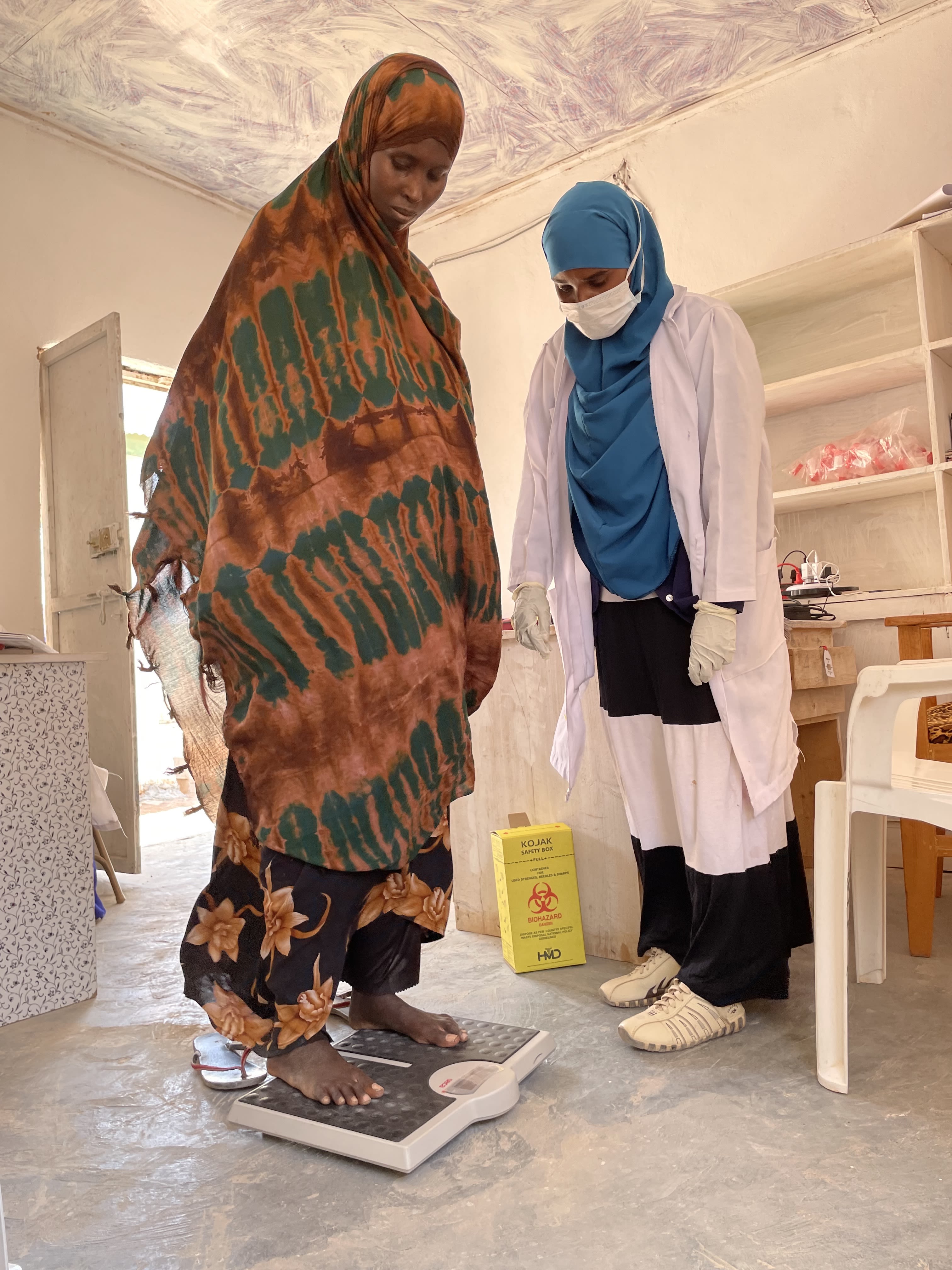


Maryan Ali Awke pulling up water, which was trucked into her community.
Maryan Ali Awke pulling up water, which was trucked into her community.

A health worker weighs a pregnant woman, checking for malnourishment.
A health worker weighs a pregnant woman, checking for malnourishment.

Dr. Mohammed Abdi Farah speaks with colleagues at a a health facility in Qarxis.
Dr. Mohammed Abdi Farah speaks with colleagues at a a health facility in Qarxis.
Halima Mahad, who lives in Yake, said her son recently finished treatment for malnourishment. Last year, her daughter was also treated. Because of the water shortage, the family limited washing their clothes and hand-washing. “I beg the children to not waste the water,” she said. Her family is mostly eating rice and pasta. She began to feed the goats maize because there was nothing else for them to eat. Three died in January, now she only has two.
“The rainy season is expected in the first or second week of April, but given the situation, it seems like nobody can wait until then. … March is a very hot time which will further devastate the situation.”
There have been upticks in cases of measles and severe malnourishment across the country, including among children arriving at displacement camps. According to the United Nations Children's Fund and World Health Organization, over 3,500 measles cases were reported and some 60,000 children were newly admitted for treatment for malnourishment in January, of these over 27,000 had severe acute malnutrition. Hajir Maalim, regional director for the Horn and East Africa at Action Against Hunger, said the organization has seen an increase in admission levels of malnourished children at its health centers in Somalia. In Xudur, in the southwestern part of the country, an average of 18 malnourished children have been admitted daily over the past month, with the highest single daily admission at 25 children. There is also an uptick in cases of acute watery diarrhea.
“When there is drought, and children are malnourished, it makes them very vulnerable to a lot of diseases,” said Hussein. “And those living in the rural areas have likely not been vaccinated.” She is also concerned about a spike in cases of skin infections, pneumonia, measles, and whooping cough in the coming months.
Health outbreaks threaten to “take the situation to another level of emergency,” said Abdihakim Farah, social transfer adviser at Puntland’s Ministry of Labour, Youth and Sports.

Repeated blows
Drought is a normal occurrence in Somalia. But the time between severe droughts is narrowing. A famine hit the country in 2011, following two failed rainy seasons, when it's estimated that 258,000 people died — a disaster blamed on a delayed humanitarian response. In 2016 and 2017, the nation experienced a four-season drought.
Climate change has exacerbated the frequency and severity of droughts,” wrote the organization Mercy Corps recently.
“People across the world need to know the situation is not something the Somali government and the people can handle.”
With the length of time between droughts reducing, communities have inadequate time to replenish livestock, said Mohamed Abdinasir Jama, communications manager for Save the Children Somalia.
Frequent drought has led to displacement camps popping up across the country, becoming more permanent than intended. Many people have no plans to return to previous lives of pastoralism or farming. “They cannot go back to the rural areas if they have nothing.” Jama said. This leads to communities with high levels of dependency on aid.
While Somalia has a culture of communities supporting one another — people helping one another to weather rough times, Farah said frequent droughts, the COVID-19 pandemic, desert locusts decimating crops, and ongoing conflict in the country has chipped away at the strength of that support.
“If your relatives call you every day for help, you cannot help. If they call once a year, you can do something. The dependency is increasing,” Jama said.
There is also aid fatigue, Farah said. “Somalis have called on the world several times and have gotten the necessary support,” he said. “No one expects that Somalia can keep calling on the world to do the same thing over and over again.”
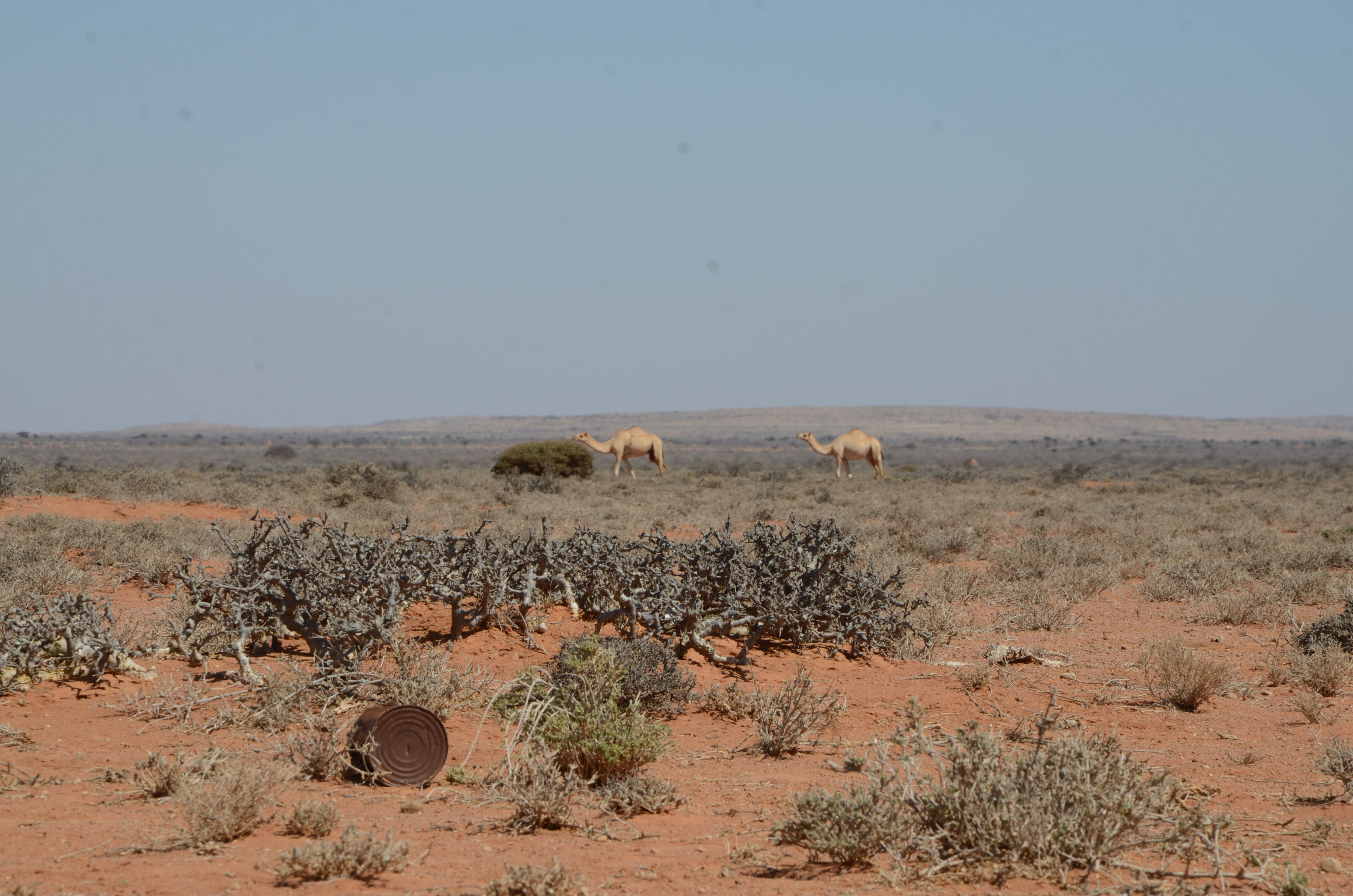

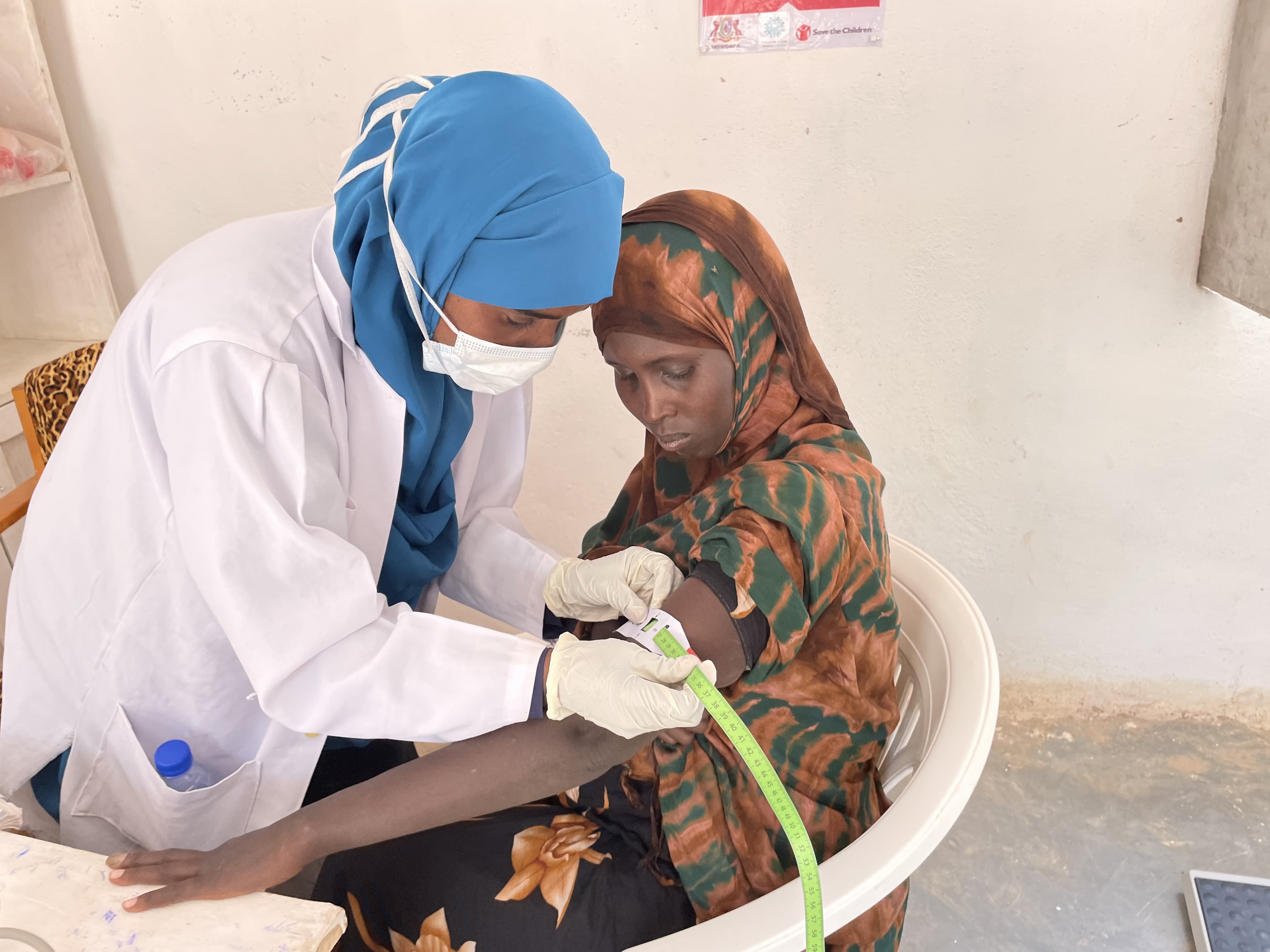
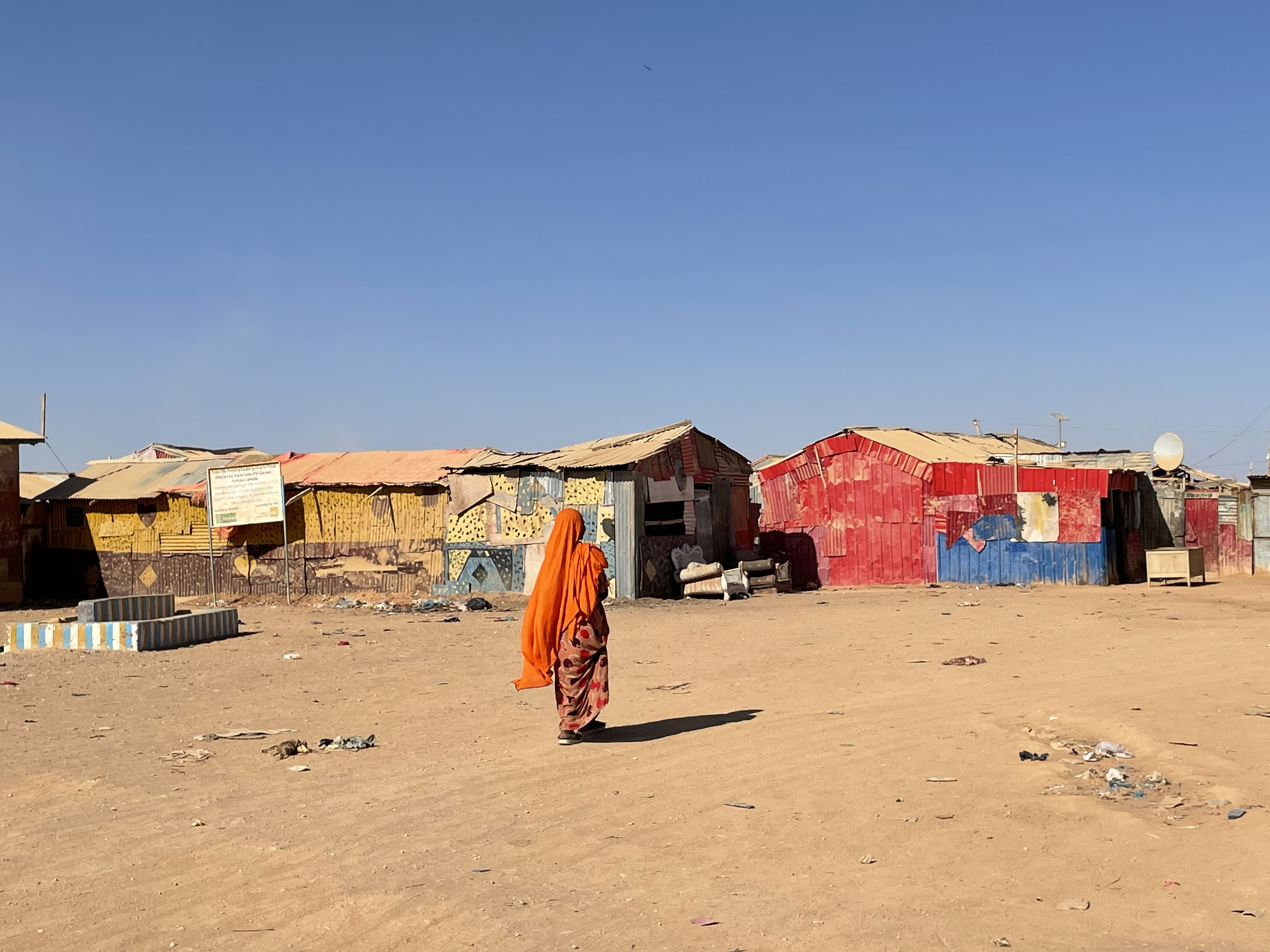
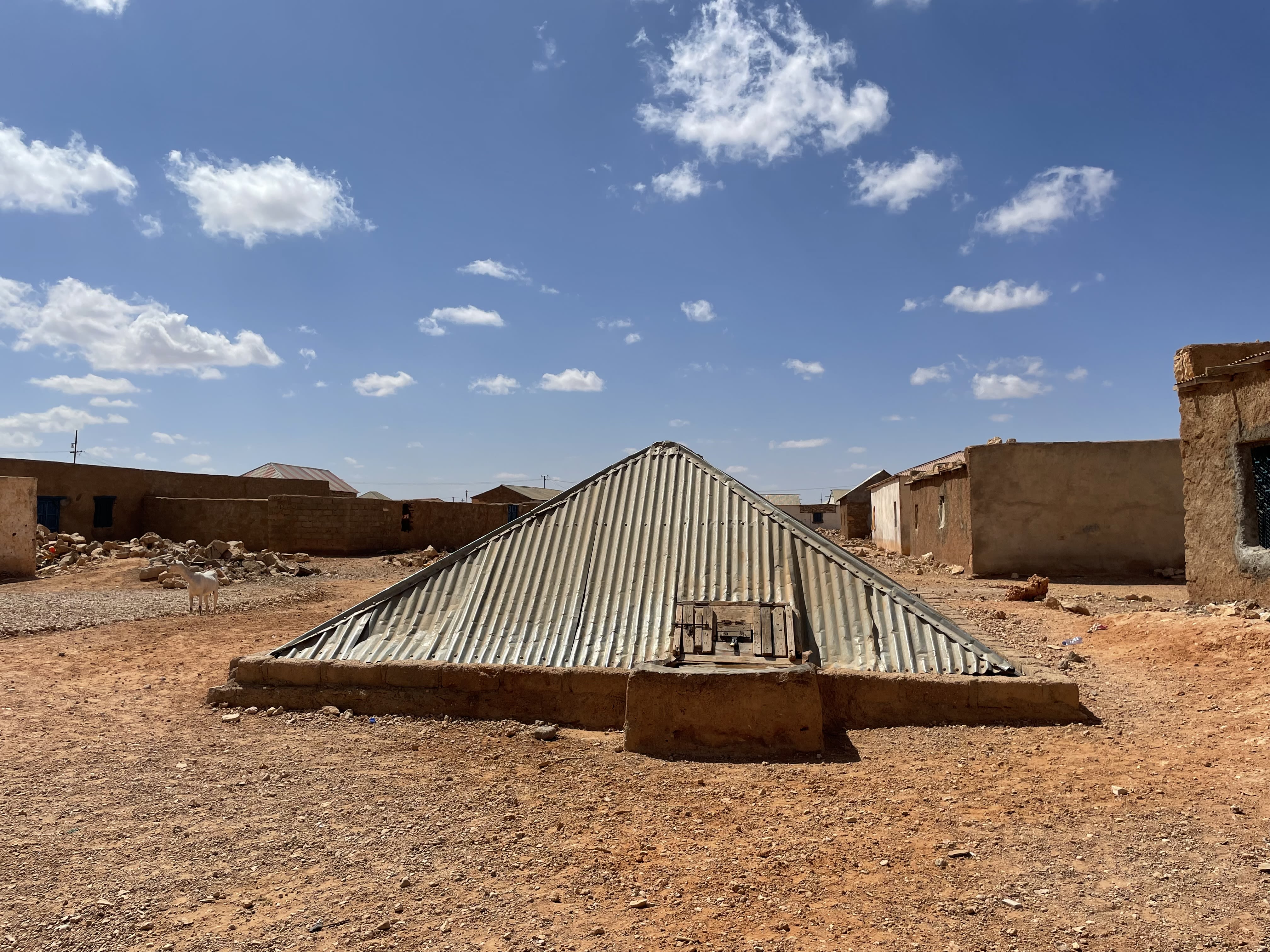

A health worker measures a pregnant woman's arm, checking for malnutrition.
A health worker measures a pregnant woman's arm, checking for malnutrition.

A woman in Jowle internal displacement camp in Garowe.
A woman in Jowle internal displacement camp in Garowe.

A berkad, which is used to contain water.
A berkad, which is used to contain water.
The humanitarian response plan for this year is only 4% funded. Previous years of drought have seen more funding: in 2017, it was 69% funded, and in 2011, it was 88%.
“People across the world need to know the situation is not something the Somali government and the people can handle,” Farah said.
Election delays in the country have also consumed the energies of politicians, distracting them from focusing on the emergency response. “Elections always divert attention from the right places,” Farah said.
In recent years, there have been efforts to build up the resilience of communities across the country so that when these disasters hit, they are not as devastating.
There has been a widespread ramp up of humanitarian cash transfers since 2017, where vulnerable communities receive mobile money aimed at keeping them afloat during these crises — a short term solution. But in 2019, the Somali government also crafted a social protection policy, which includes efforts to provide a more stable flow of cash transfers that can build up resilience in communities even when the country has fewer emergencies.
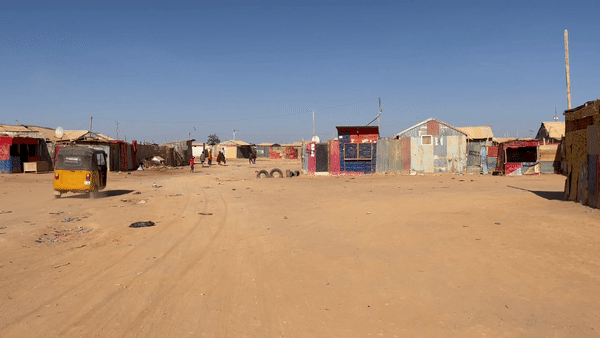
A tuk-tuk running through an internal displacement camp in Garowe.
A tuk-tuk running through an internal displacement camp in Garowe.
The Somali Cash Consortium, with funding from the European Union, Swedish and Danish embassies, are providing longer term cash transfers to pregnant and lactating women, elderly people, and unemployed youth, through categorical targeting. In case of shocks, including drought, the social transfer can be topped up to cushion the impact of the crisis.
The World Food Programme, funded by the World Bank, is also providing long-term safety net cash transfers based on poverty-level targeting in the Baxnaano safety net program. Both programs are government led, with the aim of building up the capacity of the government to one day take ownership over these social transfers as part of a broader national safety net system.
There is also a need for programs aimed at restocking livestock, promoting small business startups in urban areas and youth employment, agricultural support, and increasing the number of boreholes, earth dams, and water catchment areas, said Mohamud Isse Yusuf, social protection program manager at Save the Children Somalia.
“If you build the resilience of a community, they will be able to withstand the next disasters,” Yusuf said.
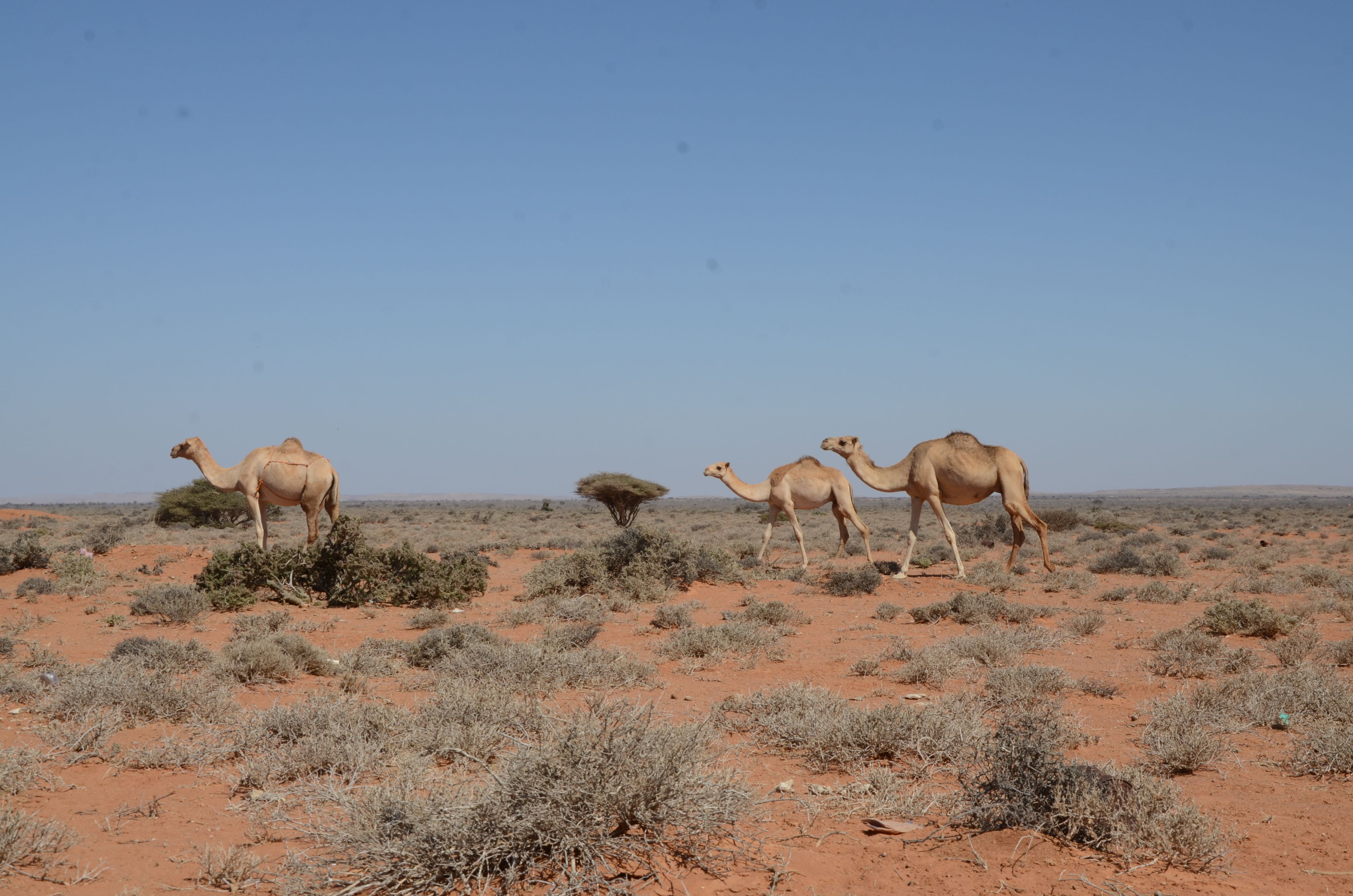
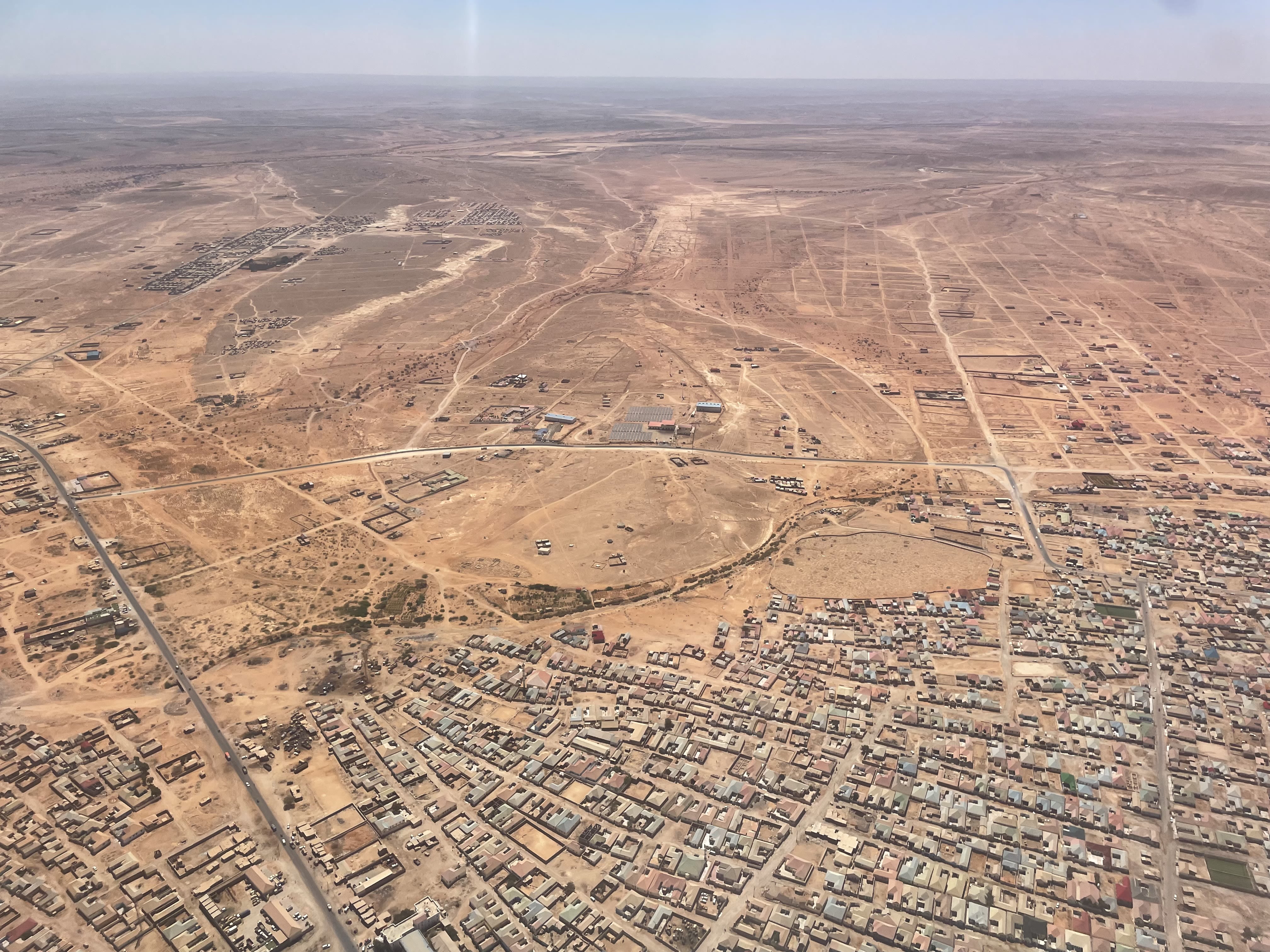
Note: The Somali Cash Consortium facilitated travel for this reporting. Devex retains full editorial independence.
Photos by: Sara Jerving
Produced by: Janelle Cruz
Devex Dish
For the inside track on how agriculture, nutrition, sustainability, and more intersect to remake the global food system, sign up for Devex Dish, our latest newsletter.
